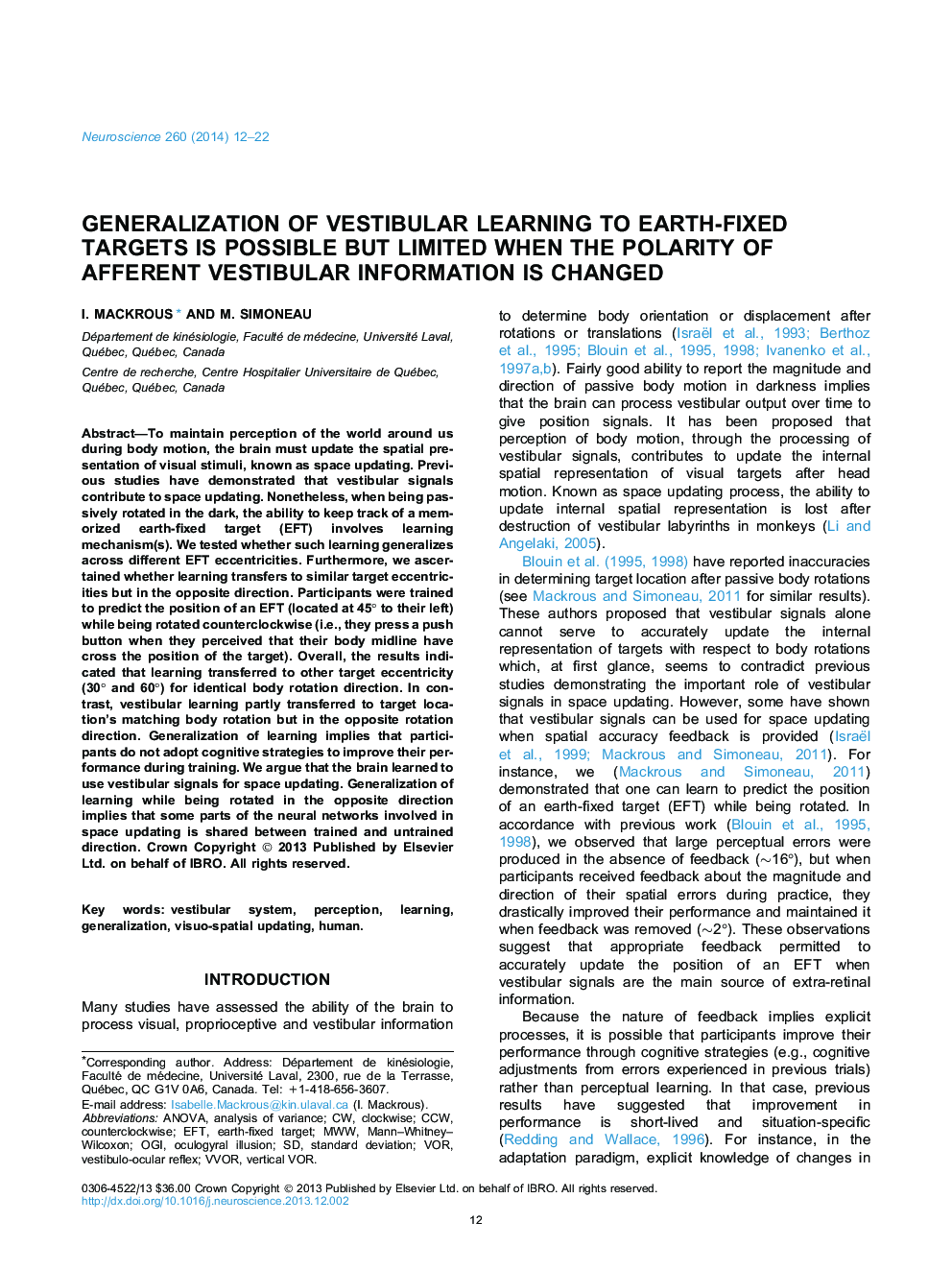| کد مقاله | کد نشریه | سال انتشار | مقاله انگلیسی | نسخه تمام متن |
|---|---|---|---|---|
| 6274086 | 1614816 | 2014 | 11 صفحه PDF | دانلود رایگان |
عنوان انگلیسی مقاله ISI
Generalization of vestibular learning to earth-fixed targets is possible but limited when the polarity of afferent vestibular information is changed
ترجمه فارسی عنوان
تعمیم یادگیری وستیبولار به اهداف ثابت زمین امکان پذیر است، اما محدود شدن زمانی که قطبش اطلاعات اطریشی متعلق به آن تغییر می کند
دانلود مقاله + سفارش ترجمه
دانلود مقاله ISI انگلیسی
رایگان برای ایرانیان
کلمات کلیدی
CCWOGIMWWEFTPerception - ادراکstandard deviation - انحراف معیارHuman - انسانCounterclockwise - به عقب به عقبanalysis of variance - تحلیل واریانسANOVA - تحلیل واریانس Analysis of varianceGeneralization - تعمیم دادنVestibulo-ocular reflex - رفلکس Vestibulo-چشمclockwise - ساعت عقبVestibular system - سیستم دهلیزیVOR - قبل ازLearning - یادگیری
موضوعات مرتبط
علوم زیستی و بیوفناوری
علم عصب شناسی
علوم اعصاب (عمومی)
چکیده انگلیسی
To maintain perception of the world around us during body motion, the brain must update the spatial presentation of visual stimuli, known as space updating. Previous studies have demonstrated that vestibular signals contribute to space updating. Nonetheless, when being passively rotated in the dark, the ability to keep track of a memorized earth-fixed target (EFT) involves learning mechanism(s). We tested whether such learning generalizes across different EFT eccentricities. Furthermore, we ascertained whether learning transfers to similar target eccentricities but in the opposite direction. Participants were trained to predict the position of an EFT (located at 45° to their left) while being rotated counterclockwise (i.e., they press a push button when they perceived that their body midline have cross the position of the target). Overall, the results indicated that learning transferred to other target eccentricity (30° and 60°) for identical body rotation direction. In contrast, vestibular learning partly transferred to target location's matching body rotation but in the opposite rotation direction. Generalization of learning implies that participants do not adopt cognitive strategies to improve their performance during training. We argue that the brain learned to use vestibular signals for space updating. Generalization of learning while being rotated in the opposite direction implies that some parts of the neural networks involved in space updating is shared between trained and untrained direction.
ناشر
Database: Elsevier - ScienceDirect (ساینس دایرکت)
Journal: Neuroscience - Volume 260, 28 February 2014, Pages 12-22
Journal: Neuroscience - Volume 260, 28 February 2014, Pages 12-22
نویسندگان
I. Mackrous, M. Simoneau,
